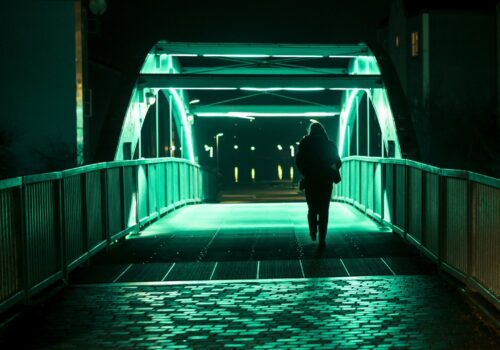MANRESA, July 11, 2016

Photo: Juan Pablo Marrufo del Toro, used with permission
Professor Barush:
We were not on the road for long when the tooth-shaped mountain dwelling-place of the Madonna of Montserrat, the quietude of the monastic chanting, and the sun-drenched passes began to seem like a dream. We made our way down, down, down the mountain, toes jamming up against our hiking boots, dust filling our noses, drinking water that was already warmed by the heat of the morning sun. Busloads of tourists were already arriving for their days-out; there were only a few bedraggled passers-by who we recognized as walking pilgrims like us; most eyed, with curiosity, our international, backpack-and-staff-bearing, slightly scraggly group. I half-heartedly cast a rock I had been carrying to represent a “burden” down the mountain, but I had already made peace with the pebble in my shoe on the way to Montserrat.
There was a moment when we were walking that I paused to look back up the mountain, shielding my eyes with my hand, and everyone was helping one another scramble down the steep and rocky ridges. One of the students exclaimed, “WOW, there are really epic things happening right now!” and another queued up one of the riveting parts of the soundtrack to The Lord of the Rings films (the bit that is played at moments when heroic things are happening–Frodo and his companions trekking across a sweeping landscape to fight evil, for example). If the road to Montserrat was characterized by teamwork and anticipation, the road to Manresa was, to borrow from one of Tolkien’s chapter titles, “The Breaking of the Fellowship.” Just as Ignatius would face a discernment of spirits in the cave (which nearly led him to take his own life), and where he had visions and revelations that would form the foundations of the Spiritual Exercises, it was a time of physical, mental, and spiritual challenges for the pilgrims.[27]
The heat of the early morning had already climbed to record temperatures of more than 105 degrees Fahrenheit as we slowly trudged across the parched and desert-like landscape; one of the students from Kenya aptly commented that he felt as though he were in the Sahara. The heat compounded swollen legs and the sweat introduced more blisters to already aching feet. Before we penetrated too deeply into the desert and solitude, Prof. Pham offered to arrange a bus for anyone who felt they could not carry on, but everyone opted to continue. Then the unimaginable happened. Despite our efforts stocking up on water at lunchtime (filling every conceivable drinking bladder and bottle) we slowly began to run out of our stores one by one. The heaviness of the bottles in our backpacks probably exacerbated our sweating.
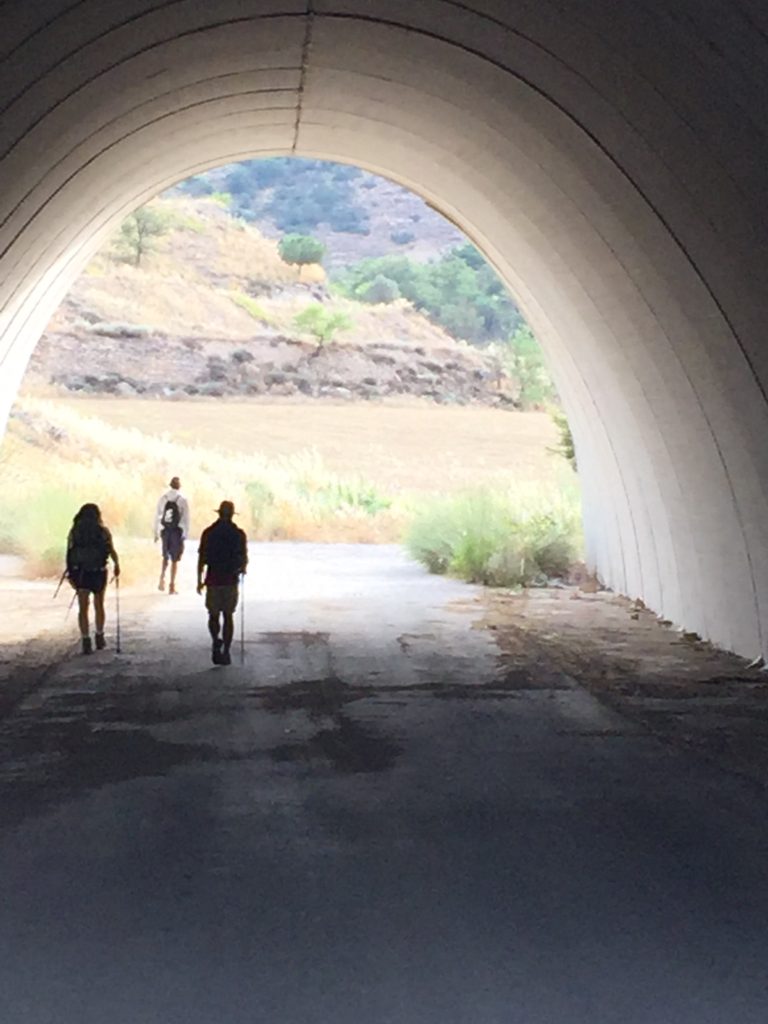
Photo: Hung Pham
There was nowhere to re-stock in the desert, and not so much as a farm vehicle to hail on the lonely and empty roads, and so we carried on. The physical challenges were not, however, without moments of spiritual revelation, one of the hallmarks of a walking pilgrimage. One student recalled a moment of grace and reconciliation:
I remember [as we came close to arriving] at Manresa, [one of the pilgrims] struggled with each step, her knees swollen and giving out. I walked beside her trying to encourage her, but felt exhausted myself and wasn’t much help. [Our guide] Jose came beside her, and without a word took her backpack onto himself, and supported her as she walked. When I saw him do this, I was deeply moved. I chose that moment as my “icon” of Jose: him walking with [the pilgrims’] bag, letting her rest her hands on his shoulders. I felt like Jesus said to me in that moment, “you are seeing him as I see him. This is who he truly is.” At the same time I knew in a deep and interior way that Jesus looks at me the same way, “as I truly am,” not as I see myself and not as others see me. This moment was a moment of deep forgiveness for me, an icon of Jose, an icon of forgiveness, and a window into the compassion of God. If only I could see like that, with the eyes of Jesus all the time. How wonderful life would be.[28]
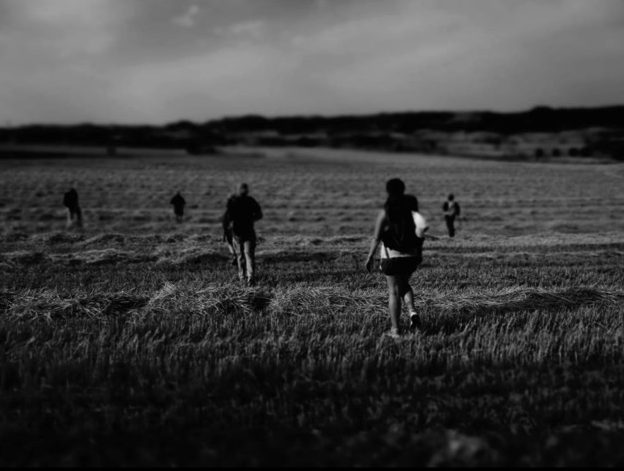
Photo: Kathryn Barush
Ignatius did not name the Jesuits “the Ignatians;” he called them “the Society of Jesus” to emphasize the importance of the teachings, compassion, humanity, and divinity centered in Christ. The student’s experience again transcends Ignatius’ to focus directly on Jesus, which allows him to re-examine his own life. Like Ignatius, he asks to “see with the eyes of Jesus.” It again marks an example of the moments when Ignatius’ journey was not being copied by we modern-day pilgrims; rather, we were continuing it. This resonates with the Thomist notion, succinctly paraphrased by Jacques Maritain, that “artistic creation does not copy God’s creation, it continues it.”[29]
There was a moment on the outskirts of Manresa where we could see the vista of the city, hazy and terra-cotta colored in a smog of dust and heat. Our guide pointed out some of the Ignatian sites and we were all politely interested but preoccupied by our thirst and ready to rest and pray in the sacred cave where Ignatius had battled his demons. A final push occurred when we realized we could not cross the bridge into town; it was cordoned off with rubble and barbed wire. With no other entrance into the city, we were urged by our guide to cross, one by one, holding up wire and crawling underneath, hoping that the structure would remain intact and not send us plummeting into the river. Our slow, painful march through town was conspicuous, as usual, and it was a relief to get to the pilgrim bureau where we would receive our certificates of completion. The moment felt less than celebratory, however, with a few sick pilgrims suffering from heatstroke. I felt a twinge of affinity at that moment not with Ignatius but with my patron saint, Catherine of Sienna, remembering an illustration I had of her as a child pressing compresses to the heads of sick people as I rushed in and out of the bathroom with paper towels and compresses for foreheads and armpits.
We were all eager to move onwards to the hostel, and when we arrived found that there was only one bathroom available. Dazed and on the verge of heatstroke, we hydrated and rinsed our underwear in the public sinks while we filed, one at a time, into the showers. It was while I was hanging my clothes off the balcony that I noticed some chaos in the hallway. One of the students had noticed his backpack was missing. After overturning the rooms, we conceded, sadly, that it had been stolen. I had often passed him at the wee hours in the morning while battling bouts of insomnia as he sat in hallways and common rooms writing, writing, writing. He travelled the lightest of all of us, with only a string bag (the kind you get for free at conferences) and the clothes on his back. He had his passport on his body, but in the stolen bag was the journal he had been writing in for the entire pilgrimage. It was with great empathy that we consoled him; there was no way he would ever see his journal again. It was heartening to watch the outpouring of kindness as the other pilgrims lent out soap and clothes and essentials.
And so we battled challenges and demons and empathized with Ignatius as his prayer and longing reached a fever-pitch in the cave at Manresa. The barbed wire, heatstroke, and stolen bag all seemed to prepare us for what we would encounter in the cave. In the words of one of the students:
Many of us had almost yielded to fatigue, heat and thirst which indeed overstretched our capacities to the point that we indeed felt the frailty of our humanity. Experience of human weakness and failure is an experience of our true self, our true identity. In my fatigue I was reminded that I am a limited creature and God is the almighty and unlimited creator. I view this as a call to rely on God more rather than rely on my strength and wisdom.[30]
It had been a long day, and it was time to go to the cave to pray and reflect on the challenges we had undergone.
I was relieved that the decorative trappings and bas-reliefs had been stripped off in a recent renovation to reveal the smooth and bone-white walls of the cave, giving a sense of the bareness where Ignatius would instruct about how to compose a space for prayer in the Spiritual Exercises. He encourages the individual retreatant to see through the gaze of the imagination to the “physical place” of a scriptural scene or any passage or topic. He teaches, “by ‘material place’ I mean, for instance, a temple or a mountain where Jesus Christ or our Lady happens to be, in accordance with the topic I desire to contemplate.”[31] In a compelling reversal, we imagined first Ignatius in the cave, with his thoughts and prayers, as he was imagining mountains and temples several hundred years before. For me, the cave was full of the memories and I imagined that the walls themselves were imbued with the impact of his experience, creating a strange sensation of mild claustrophobia and awe.
Even as we prayed, there was a sense that the Camino had not ended here at the cave, but was, in a sense, just beginning.
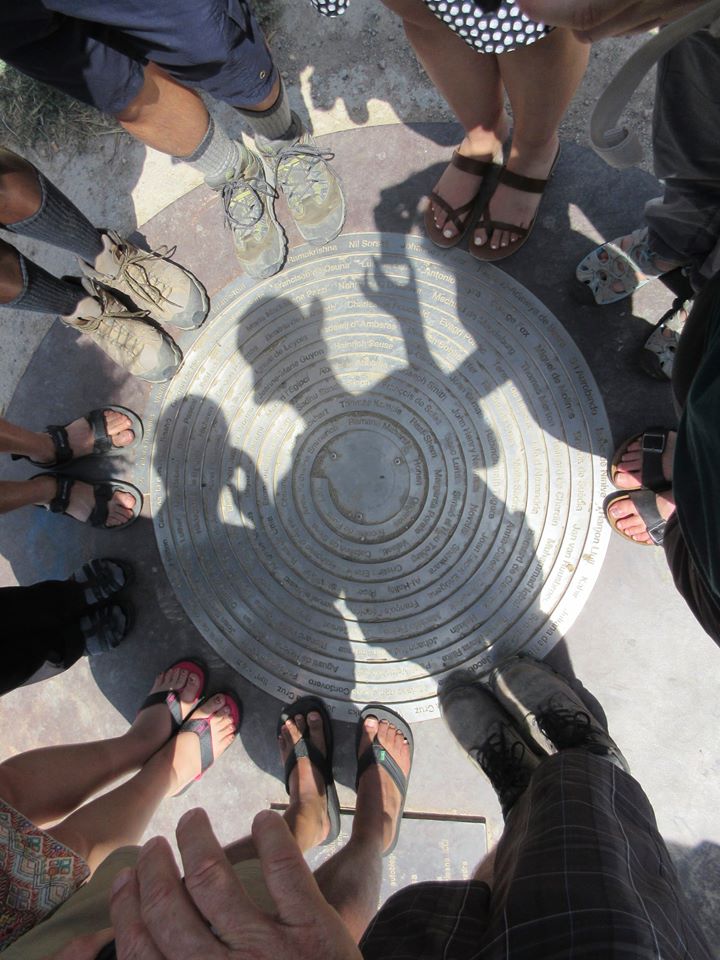
Photo: Kathryn Barush
One pilgrim’s thoughts reflect those that were shared while we prayed at Manresa, aloud and in silence:
I continue to have a sense of Jesus’ presence near me, and I feel that this has been the point of the Camino for me. Jesus is real; he is near; he is present. I have come to realize that the Camino didn’t end at Manresa. In a genuine way, the Camino continues, and I have been assured by Jesus that he is with me. I am reminded of the words of the resurrected Jesus to this disciples: “And behold, I am with you always, until the end of the age,” (Mt 28:20 NRSV).[32]
The ancient pathways that our Camino students travelled served as roads not only to and from sites and shrines, but inward. The multi-sensory pilgrimage experience—the pain of blisters, the sweat, the smell of incense in ancient churches, the feel of the cool water in mountain passes, the salted tears in those silent prayers—is something that cannot be taught through books or slides. Students no longer read about those experiences, but are living them. History blossomed in living color all around we pilgrims, students and teachers; in Spanish polychrome altarpieces from Ignatius’ time to the ancient trees along the route we traversed. As we walked, the ancient pathways transcended time and space as they mapped on to our own experiences and stories. To conclude with the words of one of the student pilgrims, “that outward journey was a symbol of what continues to take place in my soul.”[33] We are collectively changed for the better, with our symbolic swords left behind and words to share.
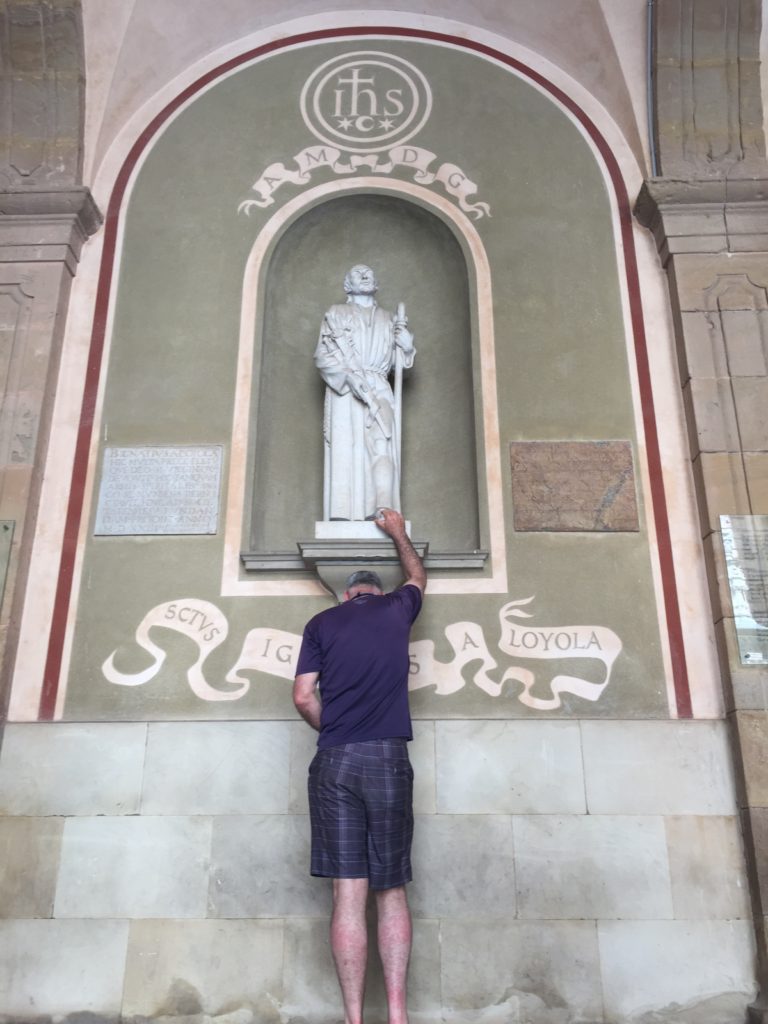
Photo: Hung Pham, SJ


